The Camera:
For this project I used a rather special Graflex Speed Graphic 4x5 large format camera. This iteration of the camera was manufactured in the 1940s and ‘50s. This specific one was formerly owned by Andrew Costikyan, who worked at Encyclopedia Britannica for decades as a photojournalist. Andrew gave the camera current Star Tribune photojournalist Glen Stubbe, who eventually passed it on to me. This camera was used to photograph thousands of people and events over the years, including portraits of Enrico Fermi, the creator of the world's first nuclear reactor (as seen below). The camera also came with this kind letter from Andrew.
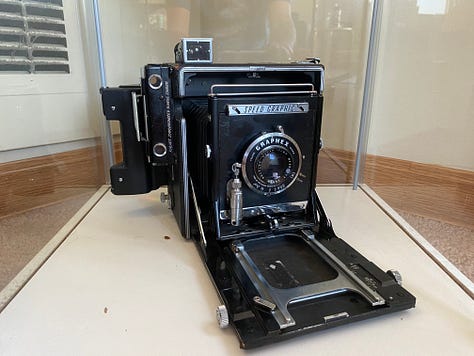
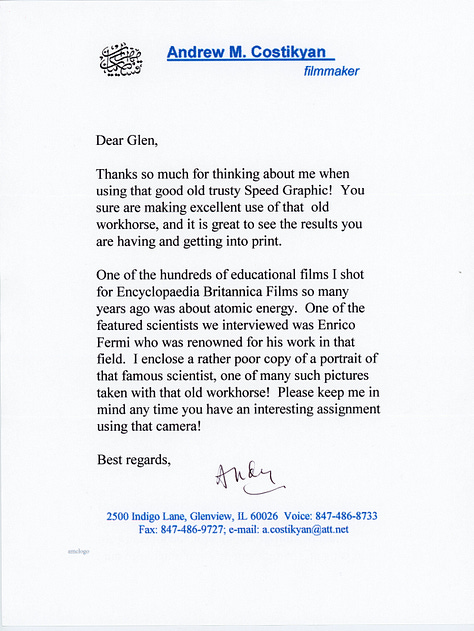
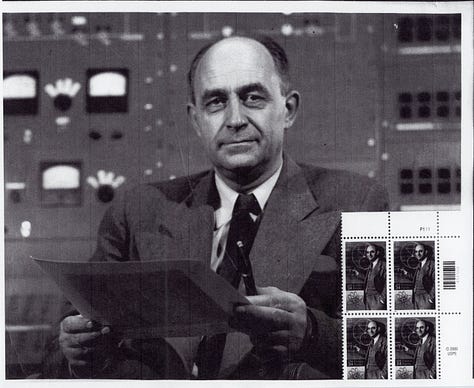
The Film:
I used expired Polaroid Polacolor Pro 100 4x5 Instant Sheet Film. Polaroid manufactured versions of this film between 1958-2008, when they stopped all instant film production until its rebirth some years later (only in the 3.2 x 4.5 dimensions). This particular film is very rare and was also passed down to me from Glen. This batch expired in 2005.
How it works:
When the film was new it was capable of producing both a negative and positive image with each exposure. You would load the film in a special film holder that would go into the back of the Speed Graphic. In order to focus the camera, you have to actually open the shutter BEFORE loading the film and look at the focus screen. Once everything is focused, you close the shutter, set the shutter speed and aperture and then slide the loaded film holder in. After that you simply pull out a little paper tab on the right to reveal the film. *Click* and you’re done with the hardest part!
Now here is the fun part: after making the exposure, you actually push a lever on the film holder down to engage little rollers. Then you slowly pull the film out of the holder and the rollers crush open a chemical pack inside the paper and evenly spreads them onto the film. Depending on the ambient temperature, you wait anywhere from 90 seconds to three minutes (the colder the temperature, the longer you wait). Once the timer is up you slowly peel open the film and pull apart the negative from the positive.
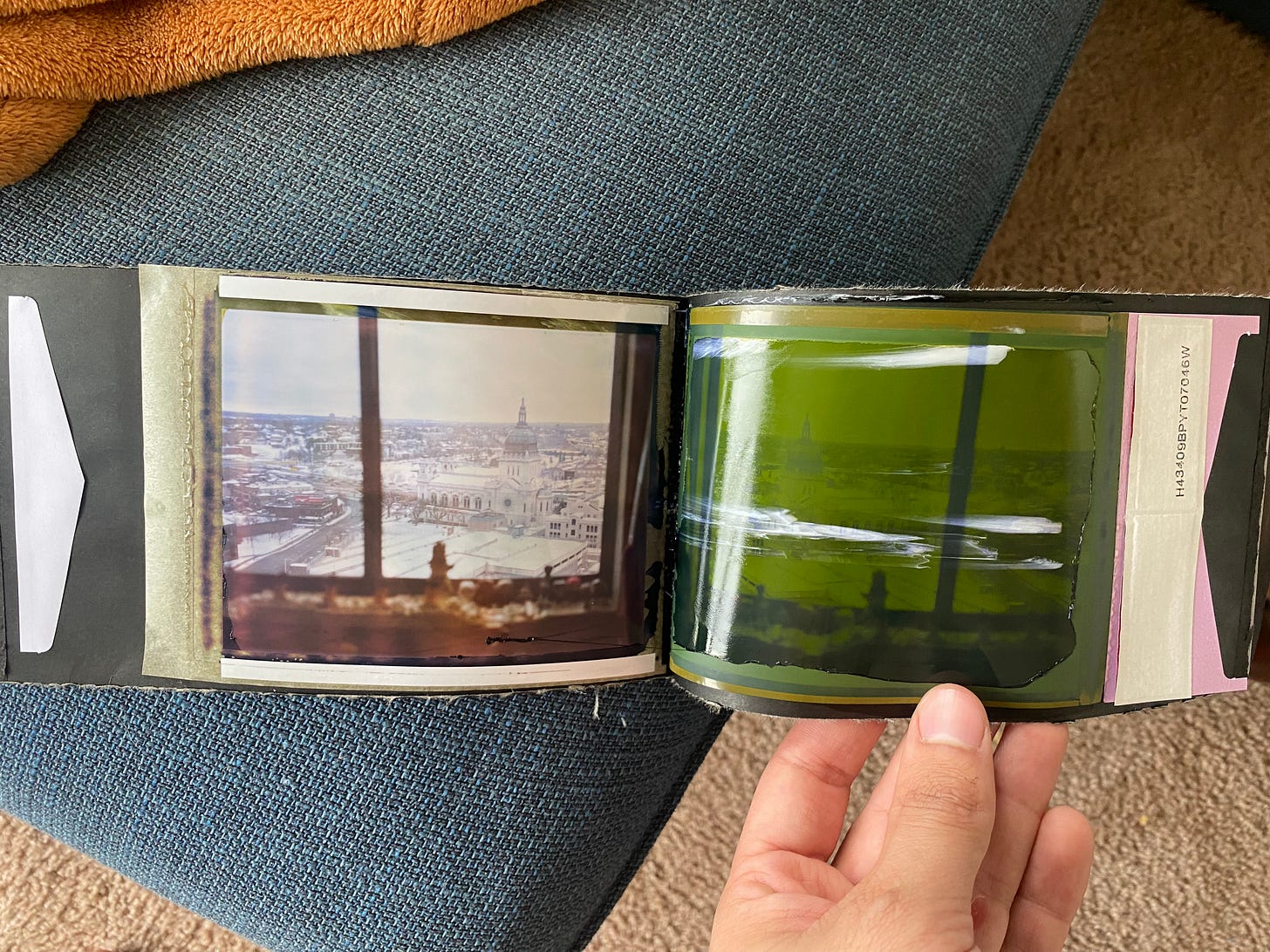
What I photographed:
I have a very limited amount of this film so I wanted to make it count! I decided to use it to photograph the North Shore of Lake Superior on my partner Elizabeth’s birthday. The photos you see were taken in Duluth and Two Harbors, Minnesota, including at Gooseberry Falls and Split Rock Lighthouse state parks.
The Results:
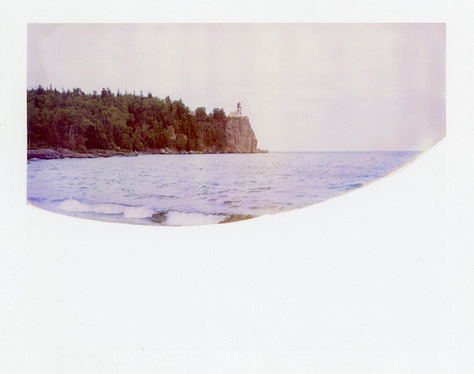
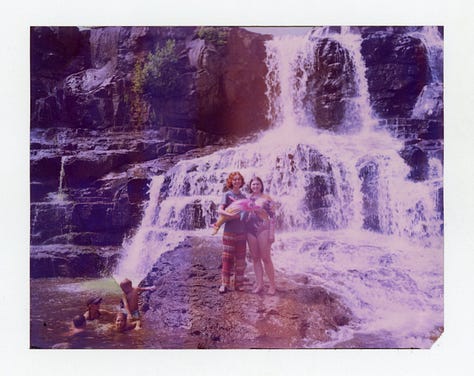
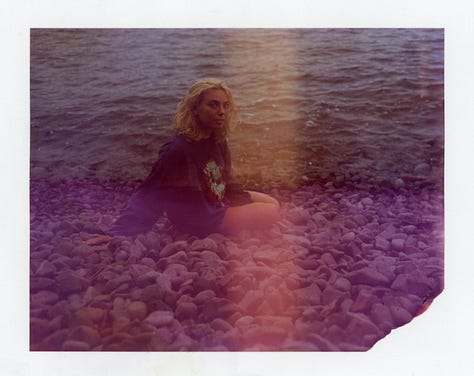
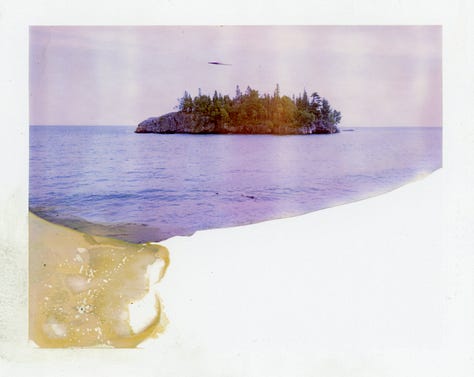
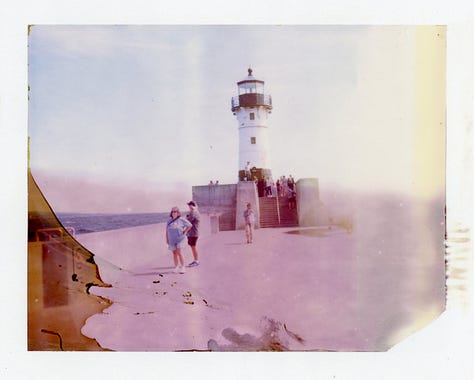
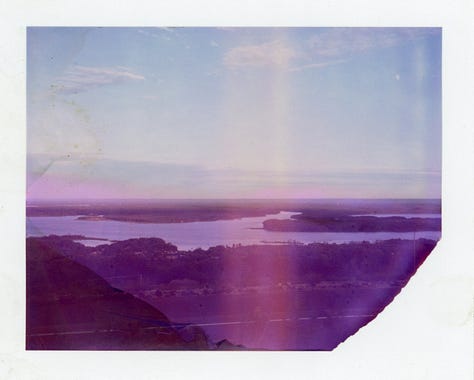
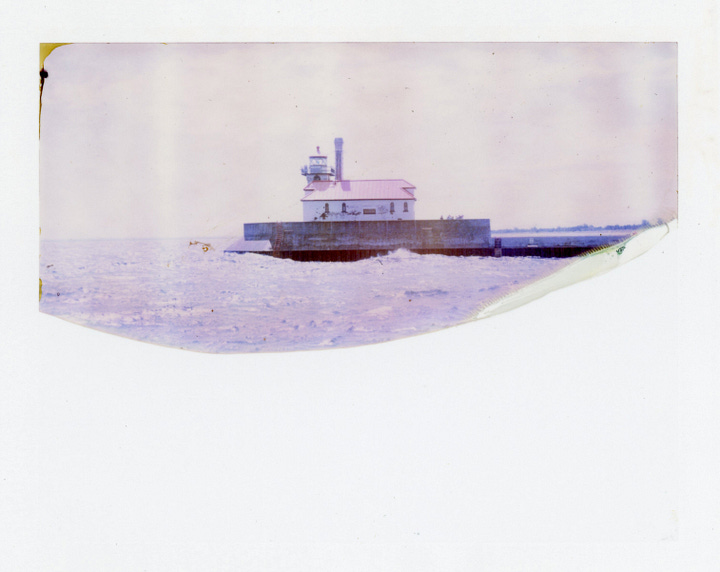
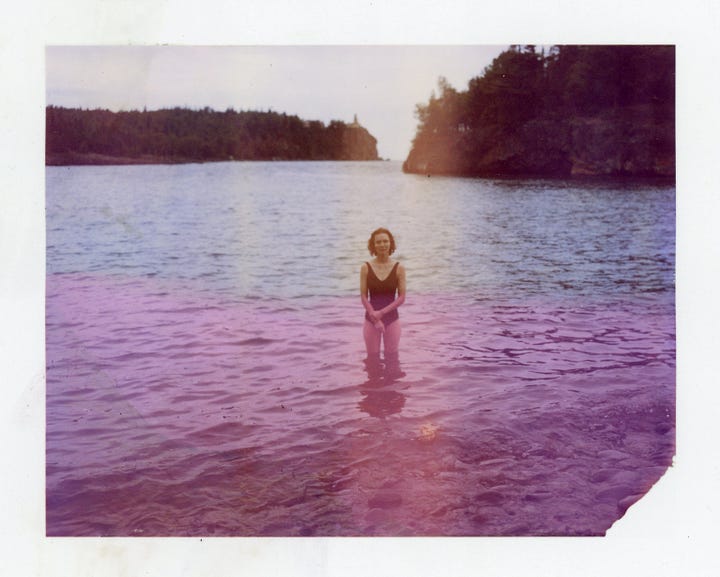
Why do they look like that???
This film expired well over a decade ago and the emulsion clearly did not age well. Film loses sensitivity and will decay as it ages if not properly stored. Freezers will preserve film as though it was brand new almost indefinitely, while a hot attic can completely ruin a roll in a matter of months. Polaroids have even more chemicals packed into them as they hold developer and fixer (both of which do not age well) to process the photo on location. Couple that with old rollers in a film holder that that hasn’t been used in years and you get an uneven application of chemicals and sticky residue on both the negative and positive. I figured out that peeling the film apart very slowly tends to yield a more complete picture but each individual sheet is truly a wildcard.
Bonus Fact:
The Speed Graphic was often used with an external flash. The flash tube from a standard flash was actually used by prop designers to fashion Luke Skywalker’s lightsaber in the original Star Wars film in 1977.







Very cool!
What a great article! Way to go Alex!!